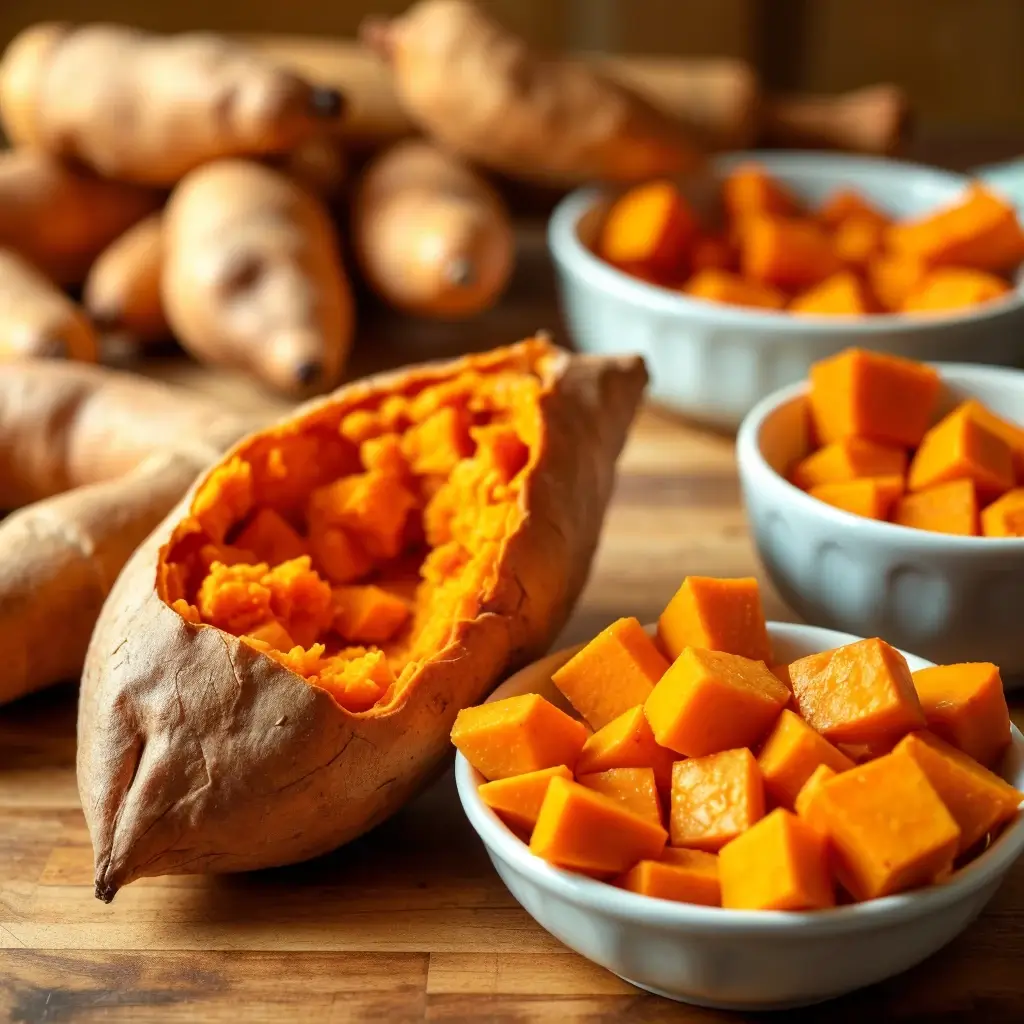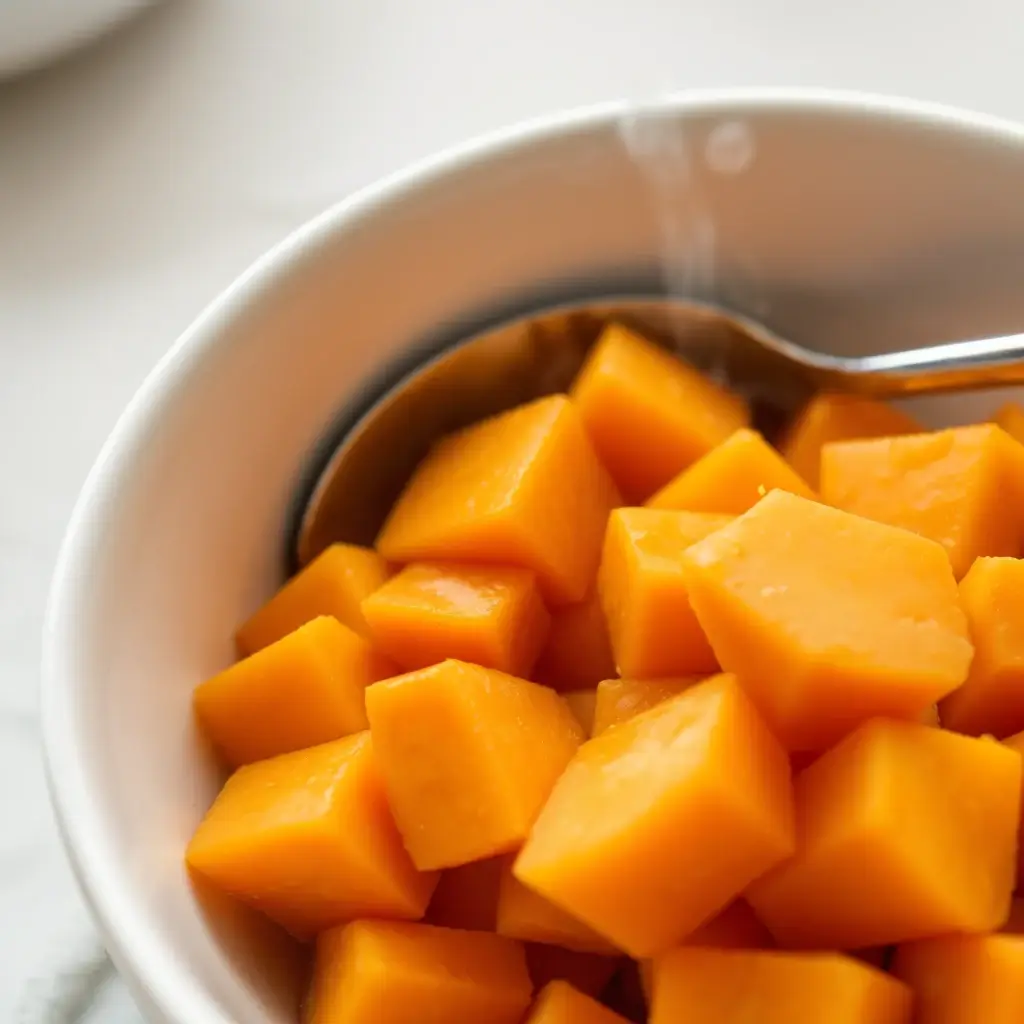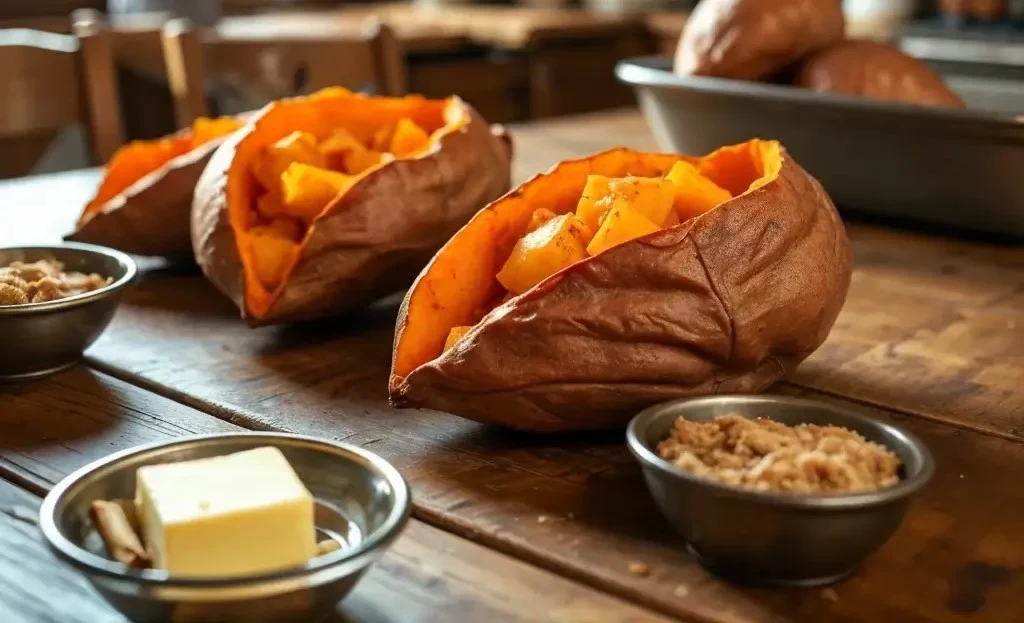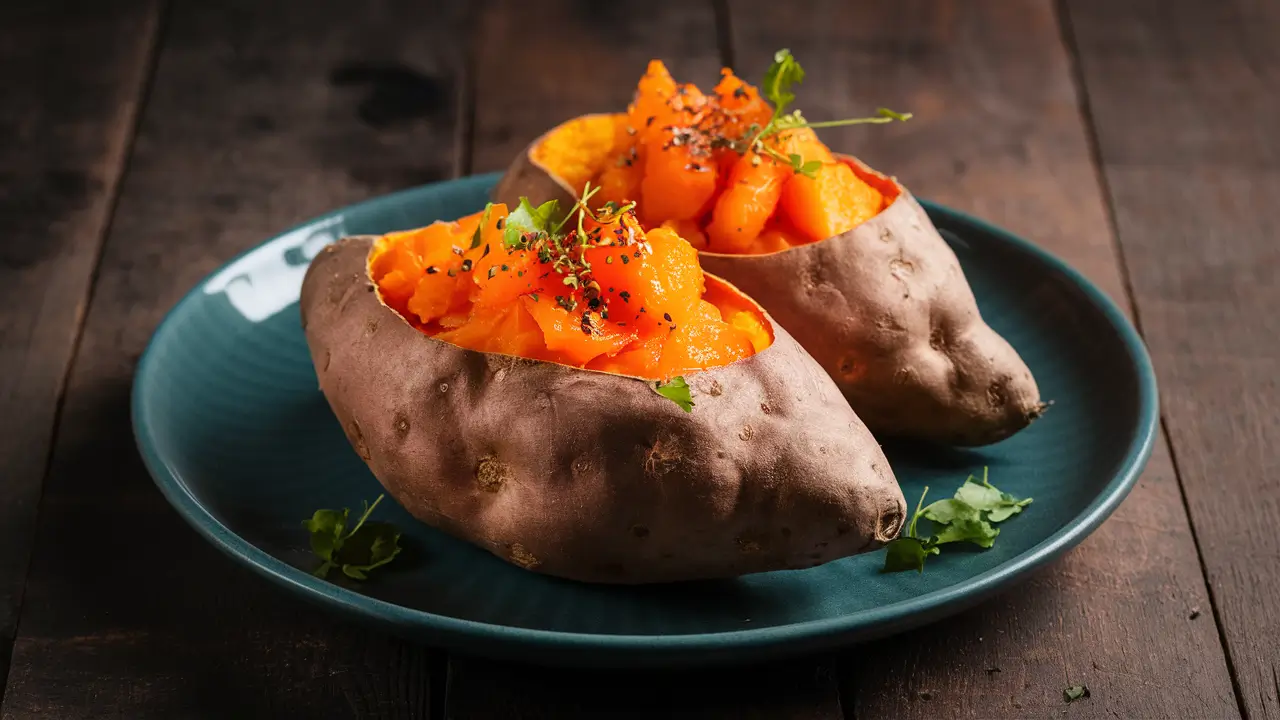Sweet potato pie is a staple dessert at many holiday gatherings, especially in the Southern United States. But if you’ve ever tried making this delicious dish, you might have wondered: Is it better to boil or bake sweet potatoes for pie? The answer depends on your preference for texture, flavor, and nutrition.
In this article, we’ll explore the differences between boiling and baking sweet potatoes. We’ll also discuss how each method affects the pie’s taste and texture and provide tips to help you make the best sweet potato pie.
The Sweet Potato Pie: A Historical Perspective
Sweet potato pie has deep roots in Southern cuisine. It’s often considered a counterpart to the more traditional pumpkin pie. The dessert became popular in African American communities due to the crop’s abundance in the region. Its versatility in both savory and sweet dishes helped it evolve into a classic.
Boiling vs. Baking Sweet Potatoes: The Main Differences

When choosing whether to boil or bake sweet potatoes for pie, it’s important to know the key differences:
- Nutritional Differences: Boiling sweet potatoes tends to preserve more nutrients. This is because boiling helps retain higher levels of vitamins like Vitamin C and some B vitamins. Baking can expose sweet potatoes to prolonged heat, which may reduce some of these nutrients.
- Texture: Boiled sweet potatoes generally have a softer texture. This can make your pie filling smoother and creamier. On the other hand, baking allows sweet potatoes to caramelize, giving them a slightly firmer texture and a richer flavor.
- Flavor: Baking sweet potatoes enhances their natural sweetness. The sugars caramelize in the heat. Boiling results in a milder flavor since the potatoes absorb water. The natural sweetness of sweet potatoes, whether boiled or baked, pairs perfectly with ingredients like buttermilk, as shown in this buttermilk sweet potato pie recipe.
Nutritional Benefits of Boiled Sweet Potatoes
If you’re focused on preserving nutrients, boiling might be your best option. Boiling sweet potatoes retains more vitamins, like Vitamin C, compared to baking. Boiling also keeps the calorie and fat content low, making it a great choice for a lighter pie.
Nutritional Benefits of Baked Sweet Potatoes
Baking sweet potatoes enhances their natural sweetness. The heat caramelizes the sugars, resulting in a richer taste. This method also preserves fiber and Vitamin A, making baked sweet potatoes both delicious and nutritious. Plus, baking generally keeps the glycemic index lower than boiling, which is ideal if you’re concerned about blood sugar. For more information on the benefits of sweet potatoes, Healthline’s guide to sweet potato nutrition provides useful insights.
How Cooking Methods Affect Pie Texture
The texture of your pie filling is crucial. The method you choose can significantly impact this:
- Boiled Sweet Potatoes: Boiling breaks down starches more thoroughly. This results in a creamier, smoother pie filling. It’s perfect if you want a pie with a silky texture.
- Baked Sweet Potatoes: Baking keeps the starches more intact. The result is a slightly firmer filling with more texture. Baked sweet potatoes can even caramelize at the edges, giving your pie a richer depth of flavor.
Your texture choice depends on your preference. Do you prefer a silky-smooth filling or a pie with more texture?
Flavor Considerations: Boiling vs. Baking
The flavor of your pie can change based on your cooking method. Boiled sweet potatoes offer a milder taste. This makes them a good base for spices like cinnamon, nutmeg, and allspice. These spices will stand out more.
Baked sweet potatoes have a more concentrated sweetness. This method is ideal if you want the natural flavor of the sweet potatoes to shine. The spices will enhance the flavor without overpowering it.
Cooking Time and Convenience
Convenience plays a big role, especially when preparing a large meal. Here’s a comparison of boiling and baking:
- Boiling: This method takes about 20 to 30 minutes, depending on the size of the potatoes. You will need to peel and cut the potatoes first, which adds prep time.
- Baking: Baking sweet potatoes takes longer—about 45 to 60 minutes. However, it requires less prep. Just pierce the potatoes and place them in the oven. This method also frees up the stove for other tasks.
Sweet Potato Pie Recipe Adjustments Based on Cooking Method
Depending on whether you boil or bake your sweet potatoes, you may need to adjust your recipe:
- Boiled Sweet Potatoes: They contain more moisture, which may require you to reduce the liquid in your recipe. You might also need to bake the pie a little longer for it to set properly.
- Baked Sweet Potatoes: Baked sweet potatoes are denser and less watery. You may need to add more liquid or fat, like butter, to achieve the desired consistency for the pie filling. For baked sweet potatoes, you’ll want to consider a firmer crust to complement the denser texture of the filling, as outlined in this sweet potato pie crust guide.
Always taste as you go. If your filling is too sweet from the baked sweet potatoes, reduce the sugar. If boiled sweet potatoes are too bland, enhance the flavor with more spice or a dash of citrus juice.
By now, you should have a clearer understanding of the differences between boiling and baking sweet potatoes for pie. Whether you’re prioritizing flavor, texture, or nutrition, each method has its strengths. Choose the method that suits your preferences and get ready to make the perfect sweet potato pie!
Expert Opinions on Boiling vs. Baking Sweet Potatoes
When it comes to cooking sweet potatoes for pie, experts often have different opinions. Some chefs prefer boiling for its convenience and the softer texture it gives to the pie filling. Others argue that baking intensifies the flavor of sweet potatoes, making for a richer, more flavorful pie.
Nutritionists often weigh in on the health aspects of each method. While boiling may preserve more vitamins, baking sweet potatoes can lower the glycemic index, which might be better for those managing blood sugar levels. Ultimately, the decision comes down to personal preferences for taste, texture, and health benefits.
Boiling Sweet Potatoes: Best Practices

If you decide to boil sweet potatoes for your pie, there are a few best practices to keep in mind:
- Peeling vs. Skin-On: For pie, it’s typically best to peel the sweet potatoes before boiling. The skins don’t break down easily and can create an undesirable texture in the filling.
- Cut into Equal Sizes: To ensure even cooking, cut the sweet potatoes into equal pieces. This prevents some pieces from becoming mushy while others remain firm.
- Avoid Overcooking: Over-boiled sweet potatoes can become waterlogged and mushy. Boil them just until tender, usually around 20 to 30 minutes, depending on the size of the pieces.
- Season the Water: For an extra boost of flavor, consider adding a pinch of salt or a cinnamon stick to the boiling water. This infuses the sweet potatoes with subtle flavor as they cook.
By following these steps, you can avoid common pitfalls of boiling, such as overly soft or flavorless sweet potatoes.
Baking Sweet Potatoes: Best Practices

Baking sweet potatoes can bring out their natural sweetness and intensify their flavor. Here are a few tips for getting the best results:
- Bake Whole with Skins On: Unlike boiling, it’s best to leave the skins on when baking. The skins help retain moisture and enhance the flavor.
- Temperature and Timing: Bake sweet potatoes at 400°F (200°C) for 45 to 60 minutes. The larger the potato, the longer it will take to bake. You’ll know they’re ready when a fork easily pierces through.
- Avoid Dryness: To keep baked sweet potatoes moist, wrap them in foil before placing them in the oven. This prevents them from drying out, especially if you prefer softer, mashed sweet potatoes for your pie.
- No Need to Add Oil: Unlike other vegetables, sweet potatoes don’t require oil to bake well. They caramelize beautifully on their own.
Baked sweet potatoes naturally caramelize, intensifying their flavor, which is perfect for rich recipes like buttermilk sweet potato pie.
Healthier Option: Boiling or Baking?
When it comes to health, both boiling and baking sweet potatoes offer benefits. However, there are a few factors to consider:
- Lower Calories: Boiling sweet potatoes keeps them low in fat and calories since it doesn’t require added oils or fats. This makes boiled sweet potatoes a good option for a lighter pie.
- Lower Glycemic Index: Baking sweet potatoes often leads to a lower glycemic index compared to boiling. This makes baked sweet potatoes a better choice for those concerned about blood sugar levels.
- Nutrient Preservation: Boiling can help preserve water-soluble vitamins, like Vitamin C. However, baking tends to retain more fiber and Vitamin A. Depending on your health priorities, either method can work well.
In short, both methods can result in a healthy pie. The best choice depends on what health factors are most important to you.
Environmental Impact of Each Cooking Method
If sustainability is a consideration, you might also want to think about the environmental impact of boiling versus baking sweet potatoes:
- Energy Efficiency: Boiling generally takes less energy than baking, as it requires less time. However, if you’re using the oven for other dishes, baking sweet potatoes at the same time can be more energy-efficient.
- Carbon Footprint: The longer cooking time of baking might contribute to a slightly higher carbon footprint. Still, the difference is relatively minor unless you’re frequently baking in small quantities.
For most home cooks, the environmental impact of either method will be similar. But if you’re looking to reduce your carbon footprint, boiling might be a slightly better option.
Conclusion: The Final Verdict on Boiling vs. Baking
So, which method is best: boil or bake sweet potatoes for making sweet potato pie? The answer depends on what you’re aiming for:
- For a Creamy, Smooth Pie: Boiled sweet potatoes are the way to go. Their softer texture blends easily into a smooth, custard-like filling.
- For a Rich, Flavorful Pie: Baked sweet potatoes will provide a more intense, caramelized flavor. The slightly firmer texture will give your pie a bit more structure.
- For Health-Conscious Bakers: If you’re watching calories or concerned about blood sugar, baking sweet potatoes might be the better option due to its lower glycemic index.
Ultimately, both methods can yield delicious results. Whether you choose boiling or baking, adjusting your recipe and cooking technique will help you achieve the perfect pie based on your preferences.
Frequently Asked Questions (FAQs)
1. Is it better to peel sweet potatoes before boiling or baking them for pie?
Yes, it’s usually best to peel sweet potatoes before boiling them to avoid an uneven texture in the pie filling. However, when baking, you can leave the skins on and peel them afterward.
2. Can you freeze sweet potatoes after boiling or baking for pies?
Yes, you can freeze both boiled and baked sweet potatoes. It’s best to mash them first and store them in an airtight container. When ready to use, thaw them in the fridge overnight and mix them into your pie filling.
3. How long should I boil sweet potatoes for pie?
Boil sweet potatoes for about 20 to 30 minutes. Check for tenderness by piercing with a fork. They’re ready when the fork easily slides through the flesh.
4. Does baking sweet potatoes make them sweeter?
Yes, baking sweet potatoes enhances their natural sweetness. The heat caramelizes the sugars, making them taste sweeter than when boiled.
5. Can I use both boiled and baked sweet potatoes in the same pie recipe?
Yes, you can use a combination of boiled and baked sweet potatoes. This can give you the best of both worlds: the creamy texture of boiled potatoes and the rich flavor of baked ones. Just be sure to adjust your recipe to balance moisture levels.
With these insights, you’re now fully equipped to make an informed decision on whether to boil or bake sweet potatoes for your pie. Whichever method you choose, your pie is sure to be a hit!

